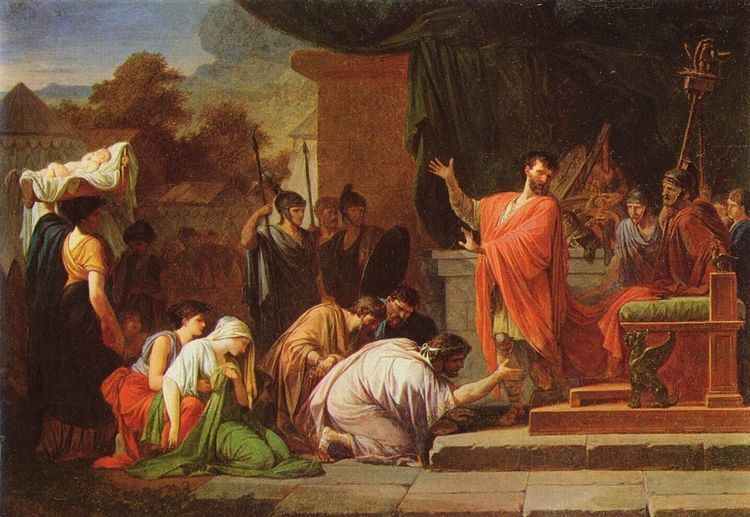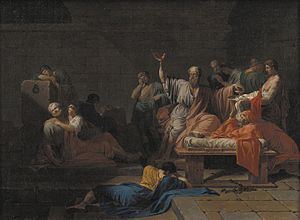Name Jean-Francois Peyron | ||
 | ||
Mozart (Violin Sonata No. 11) and Jean Francois Pierre Peyron (1744-1814)
Jean-François Pierre Peyron, full name of Pierre Peyron (15 December 1744 – 20 January 1814), was a French Neoclassical painter.
Contents
- Mozart Violin Sonata No 11 and Jean Francois Pierre Peyron 1744 1814
- Jean Francois Pierre Peyron 1744 1814 16 paintings
- Biography
- List of works partial
- References
Jean Francois Pierre Peyron (1744-1814): 16 paintings
Biography

Peyron was born in Aix-en-Provence, where he studied art under Claude Arnulphy. He was later a pupil of Lagrenée and was regarded as among the best painters of his generation.

He was one of the first to re-apply the Classic principles of composition, in the manner of Poussin, while the prevailing fashion was in favour of Rococo.
He won the prestigious Prix de Rome in 1773, ahead of David who was also a candidate. He spent the years between 1775 and 1782 in Rome, with the Academy of France in Rome.
On his return to Paris, Peyron found that the career of David had taken its rise and has completely eclipsed his own, relegating it to a minor role in the history of art - which became evident in the exhibitions at the Salon of Paris between 1785 and 1787. David did, however, pay homage to Peyron at the time of his funeral, stating: “He had opened my eyes.” Peyron died in Paris, aged 69.
